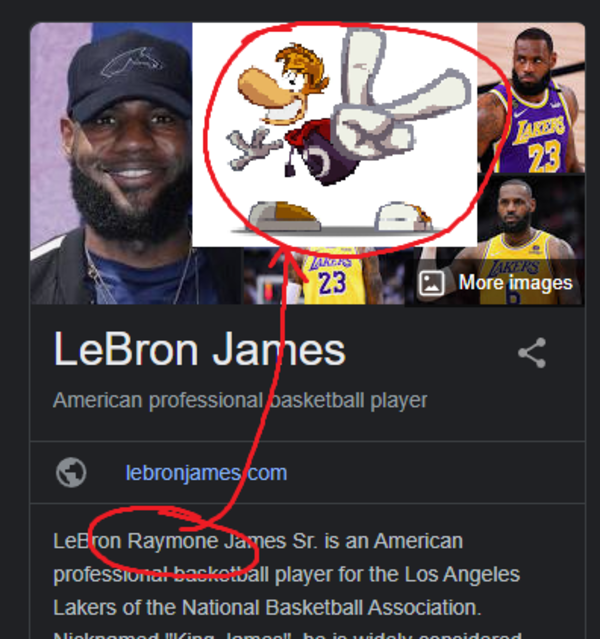In the digital age, memes serve as a potent mode of communication, transcending linguistic and cultural barriers. They encapsulate complex ideas or sentiments into an easily digestible format, often merging humor with social critique. Among the sprawling landscape of internet memes, the phenomenon of “similar” or soundalike memes, such as “Rayman James,” presents a rich tapestry for exploration. These memes leverage the expectations and preconceptions surrounding both identity and cultural references. Understanding the implications of such memes invites a wider discourse on the intersectionality of humor, identity, and societal norms.
The rise of memes has been inseparable from the evolution of digital communication. As users continually seek novel ways to engage with one another, similar memes emerge from the collective consciousness, tapping into shared cultural references. This article delves into the expectations cultivated by characters like Rayman James, examining how soundalikes navigate cultural narratives while reflecting individual and collective identities. The analysis will delve into how these expectations shape perceptions and drive societal conversations.
Character Expectations and Cultural Identity
Characters embedded within memes serve as cultural touchstones, evoking immediate recognition and connection among viewers. In the case of Rayman James, the clever play on words melds the humorous element of the renowned video game character, Rayman, with a recognizable last name, James, which may invoke thoughts of a famous athlete. This juxtaposition invites a multitude of expectations, not just about the characters, but also about the societal roles they are perceived to inhabit.
At the essence of similar memes is the interplay between humor and identity. The audience is primed to derive amusement from the familiar while simultaneously engaging in a cognitive exercise — deciphering the layers of meaning embedded in the meme. The expectation rests on the viewer’s background knowledge; individuals familiar with both Rayman and the cultural context of ‘James’ will likely yield a richer interpretational experience than those who lack this contextual understanding. Therefore, memes such as “Rayman James” operate on multiple registers, blending humor with introspection about cultural narratives.
The Role of Humor in Conveying Parody
Humor serves as a dual mechanism in similar memes: it provides entertainment while simultaneously critiquing societal norms. The juxtaposition of diverse cultural references enables viewers to navigate complex ideas in a more approachable manner. Soundalike memes, through their intrinsic humor, can deliver sharp commentary on stereotypes, expectations, or cultural phenomena.
For example, the Rayman James meme possesses an inherent irony that provokes reflection on the absurdity of conflating disparate identities. The expectation set forth by the character conjures images of prowess, gaming skills, and athletic excellence, yet it also implicates relevant discussions about racial identity and representation in media. By reinterpreting familiar characters, memes can disrupt normative expectations surrounding race, gender, and professional identity, ultimately fostering discourse around representation.
Moreover, this humor acts as a social equalizer, allowing individuals from diverse backgrounds to share an experience founded on collective knowledge and recognition. The absurdity of such parallels invites critique, as the audience is often simultaneously entertained and compelled to question the societal stereotypes they may reinforce or challenge.
The Mechanics of Virality: How Memes Spread
The mechanics of internet virality are fundamental in understanding the proliferation of memes like Rayman James. The internet functions as both a repository of cultural artifacts and a conveyor of information, where memes can travel rapidly across different platforms. As users share, remix, and adapt these soundalike memes, they engender a sense of ownership and communal connection to the content—yet what remains consistent is the way expectations are recalibrated with every iteration.
This virality is predicated on the concept of recognition; users are drawn to memes that resonate with their identities or experiences. Thus, the “Rayman James” meme’s capacity to elicit an immediate reaction stems from its embedded cultural significance, as audiences are inherently more likely to engage with a soundalike they recognize. The ensuing dialogues surrounding these figures can amplify discussions about identity, whether through nuanced critique or light-hearted banter.
Furthermore, social media platforms like Twitter, Instagram, and TikTok operate as incubators for these memes. The rapid dissemination allows for layered meanings to accumulate, enriching the original meme’s context. Each share and retweet transforms and reframes the character’s portrayal, continually expanding the expectations enveloping the figure. The layers of engagement offered by digital platforms enhance the complexity of the dialogue initiated by such memes.
Implications for Societal Discourse
The transcendent nature of similar memes, such as Rayman James, beckons societal discourse on the implications of cultural appropriation versus appreciation. Characters rendered through humor are often stripped of their original contexts, revealing how cultural representations can be commodified or misinterpreted. The expectations surrounding these figures thus require critical engagement; while they can satirize stereotypes, they also risk reinforcing harmful narratives when omitted from thoughtful analysis.
The power of soundalike memes to reflect societal attitudes toward race, gender, and identity underscores the importance of conscious consumption. Through the lens of expectations, consumers of memes must navigate the fine line between humor and critique—examining not only the joke but its repercussions on broader societal dialogues. This self-examination is crucial in fostering a nuanced understanding of both popular culture and the characters it showcases.
The Future of Memetic Culture
As digital communication continues to evolve, the appeal of similar memes will persist as an avenue for creativity and discourse. Characters that elicit expectations will invariably shape contemporary discussions on identity, as audiences seek relevance within a rapidly changing cultural landscape. Soundalike memes, with their rich tapestry of humor and critique, will provide fertile ground for understanding and navigating societal complexities.
In conclusion, the exploration of characters like Rayman James illuminates the intricate interplay of humor, identity, and cultural representation inherent in similar memes. Through critical engagement with the expectations they provoke, individuals can navigate the multifaceted dimensions of digital culture. The power of memes lies not only in their capacity to entertain but also in their potential to challenge perceptions and promote vital conversations within the ever-evolving narrative of society.





























